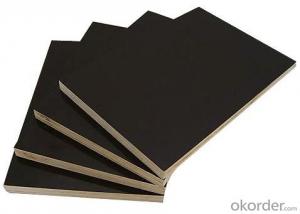When it comes to choosing materials for furniture, cabinetry, or even flooring, two of the most common options that come to mind are MDF (Medium Density Fiberboard) and Plywood. Both are versatile, affordable, and widely used in the woodworking and construction industries. But what exactly sets them apart? In this article, we’ll dive into the differences between MDF and Plywood, exploring their unique properties, applications, and how to choose the right one for your project.
The Basics: What is MDF and Plywood?
MDF, or Medium Density Fiberboard, is an engineered wood product made from wood fibers and resin. It’s a man-made material that’s known for its uniformity, smooth surface, and affordability. On the other hand, Plywood is a natural wood product that consists of thin layers of wood veneer, or plies, glued together with their grains alternating at right angles. This construction gives Plywood its strength and versatility.
Aesthetic Appeal: Smooth vs. Natural
One of the first things you might notice when comparing MDF and Plywood is their appearance. MDF has a very smooth surface, which makes it ideal for painting or applying a thin veneer. It’s a popular choice for furniture and cabinetry because it can be easily customized to match any design style. Plywood, with its layers of wood veneer, has a more natural look. It’s perfect for projects where you want to showcase the wood’s grain and texture, like in rustic or traditional designs.
Durability: Toughness Under Pressure
Durability is a key factor when selecting materials for your projects. MDF is denser and heavier than Plywood, which makes it more resistant to denting and warping. However, Plywood’s cross-layered structure provides excellent strength and resistance to cracking, especially under heavy loads. This makes Plywood a better choice for applications that require structural support, such as shelving or flooring.
Moisture Resistance: Which One Can Take the Heat?
When it comes to moisture, Plywood has the upper hand. MDF is more susceptible to damage from moisture, which can cause it to swell and lose shape. This makes it less suitable for use in damp environments like bathrooms or kitchens. Plywood, especially marine-grade Plywood, is designed to withstand moisture, making it a more reliable option for these areas.
Ease of Use: Working with MDF vs. Plywood
Working with MDF is generally easier due to its uniform density and smooth surface. It can be easily cut, sanded, and shaped, which is great for intricate designs and detailing. Plywood, while also easy to work with, can be more challenging when it comes to edge finishing, as its layered structure can sometimes lead to chipping or splitting.
Cost Considerations: Budget-Friendly Options
Both MDF and Plywood are budget-friendly options compared to solid wood, but there can be variations in price depending on the quality and type of wood used. MDF is often less expensive, making it a popular choice for cost-conscious DIYers and professionals alike. Plywood can be more expensive, but its strength and durability often justify the higher cost for many applications.
Environmental Impact: Green Choices
The environmental impact of the materials we use is becoming increasingly important. MDF is made from wood fibers and resin, which can be sourced from sustainable forests, but the manufacturing process involves the use of chemicals and can have a larger carbon footprint. Plywood, being a natural wood product, generally has a smaller environmental impact, but it’s still important to consider the source of the wood and the manufacturing practices.
Applications: Where to Use MDF and Plywood
Now that we’ve covered the basics, let’s look at some specific applications where MDF and Plywood shine. MDF is often used in furniture construction, cabinetry, and for creating decorative moldings. Its smooth surface and ease of customization make it perfect for these applications. Plywood, with its strength and resistance to warping, is commonly used for structural elements, flooring, and exterior applications where durability is key.
Making the Right Choice: Factors to Consider
When deciding between MDF and Plywood for your project, consider the following factors:
– Aesthetics: Do you prefer a smooth, paintable surface or a natural wood look?
– Durability: Will your project need to withstand heavy loads or resist damage from moisture?
– Ease of Use: How intricate are the designs you’re planning to create?
– Cost: What’s your budget, and does one material offer a better value for the quality?
– Environmental Impact: Are you looking to minimize your project’s carbon footprint?
Personal Touch: My Experience with MDF and Plywood
From my personal experience, I’ve found that MDF is fantastic for detailed work and when a smooth finish is required. I’ve used it for cabinet doors and furniture pieces that needed a clean, modern look. Plywood, on the other hand, has been my go-to for projects that require strength and stability, like shelving units and workbenches.
Final Thoughts
In conclusion, both MDF and Plywood have their unique advantages and ideal applications. The choice between the two will largely depend on your specific project needs, design preferences, and budget. By understanding the differences and considering the factors mentioned above, you’ll be well-equipped to make an informed decision and select the best material for your next woodworking or construction project.

